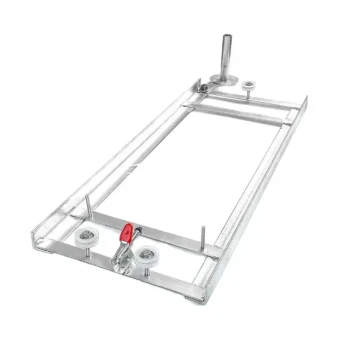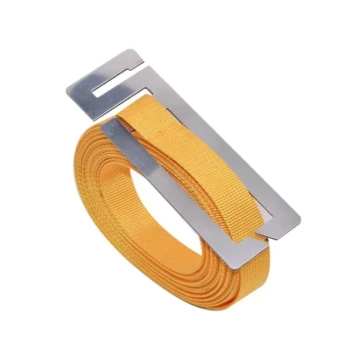No, screened bottom boards are not necessary for beekeeping. A colony can thrive with either a screened or a solid bottom board, as both serve the fundamental purpose of providing a floor for the hive. However, choosing a screened bottom board is a strategic decision that offers significant advantages in ventilation and pest management that many beekeepers consider a modern standard of practice.
The choice between a screened or solid bottom board is not about necessity, but about management style. It's a decision that balances the critical needs for hive ventilation and pest control against insulation from cold weather.

The Core Functions of a Hive Bottom Board
Before weighing the options, it's essential to understand what a bottom board does. It is the hive's foundation, serving two primary purposes regardless of its type.
The Hive's Foundation and Entrance
The bottom board is the floor of the hive. It provides a surface for the bees to walk on and, in conjunction with the hive body, creates the main entrance the bees use for foraging and defense.
Protection from the Elements
It also provides a barrier between the colony and the ground, protecting the bees from moisture, drafts, and predators that may try to enter from below.
Key Advantages of a Screened Bottom Board
While not essential, screened bottom boards provide clear benefits that directly address some of modern beekeeping's most persistent challenges, particularly heat and pests.
Superior Ventilation and Temperature Regulation
The screen mesh allows for constant, gentle airflow throughout the hive. This is incredibly beneficial during hot summers, as it helps the bees cool the colony more efficiently without having to expend as much energy fanning at the entrance.
A Passive Defense Against Varroa Mites
This is arguably the most significant advantage. Varroa mites, a devastating parasite, periodically fall off their honeybee hosts. With a solid floor, the mite can simply climb back onto another bee. With a screened bottom, many of these dislodged mites fall completely out of the hive and perish.
Deterring Small Hive Beetles
Small Hive Beetles (SHB) are another common pest that prefers dark, humid conditions. The increased light and ventilation from a screened bottom board create a less hospitable environment, helping to deter SHB from establishing themselves within the hive.
Aiding in Hive Inspections
The screen offers a non-intrusive window into the colony. By looking up from underneath, a beekeeper can get a quick sense of the cluster's size and location without opening the hive and disturbing the bees.
Understanding the Trade-offs and Best Practices
Opting for a screened bottom board is not without its considerations. Understanding its limitations is key to using it effectively.
The Solid Board's Advantage: Insulation
The primary strength of a solid bottom board is its superior insulation. In regions with harsh, cold winters, a solid board offers better protection against cold drafts, helping the colony conserve heat and energy.
The Need for a Removable Insert
Most modern screened bottom boards are sold with a removable plastic or wood insert, often called a "slider board." This simple addition gives you the best of both worlds. You can remove it for maximum ventilation in summer and slide it in for insulation during the winter.
Correct Seasonal Management
Using a screened bottom board isn't a "set it and forget it" choice. Forgetting to insert the slider board before winter can expose the colony to excessive cold. Conversely, leaving the insert in during a summer nectar flow negates the ventilation benefit and can lead to overheating.
Making the Right Choice for Your Goal
Your local climate and beekeeping philosophy should guide your decision.
- If your primary focus is maximum simplicity in a very cold climate: A solid bottom board is a reliable and straightforward choice that prioritizes insulation above all else.
- If your primary focus is integrated pest management (IPM) in a hot or humid climate: A screened bottom board is the superior tool for passively reducing Varroa mite loads and improving summer ventilation.
- If your primary focus is maximum flexibility across all four seasons: A screened bottom board with a removable insert is the most versatile option, allowing you to adapt the hive to changing conditions.
Ultimately, the right bottom board is the one that best supports your hive's health within your specific environment and management style.
Summary Table:
| Feature | Screened Bottom Board | Solid Bottom Board |
|---|---|---|
| Primary Benefit | Ventilation & Pest Control | Insulation |
| Best For | Hot/Humid Climates, IPM | Cold Climates, Simplicity |
| Varroa Mite Control | Yes (Passive) | No |
| Seasonal Flexibility | High (with removable insert) | Low |
Optimize Your Apiary's Health with the Right Equipment
Choosing the correct bottom board is a key decision for hive vitality. At HONESTBEE, we supply commercial apiaries and beekeeping equipment distributors with the durable, high-quality supplies needed to implement effective management strategies—whether you prioritize screened boards for integrated pest management or solid boards for winter insulation.
Let our wholesale-focused expertise help you build stronger, more productive hives. Contact HONESTBEE today to discuss your equipment needs and elevate your beekeeping operation.
Visual Guide

Related Products
- Langstroth Screen Bottom Board for Beekeeping Wholesale
- Australian Pine Wood Langstroth Screen Bottom Board for Wholesale
- HONESTBEE Wooden Bee Escape Board with Triangle Mesh Design for Beekeeping
- Professional Galvanized Hive Strap with Secure Locking Buckle for Beekeeping
- HONESTBEE Professional Frame Wiring Board and Jig
People Also Ask
- What is the primary function of a screened bottom board in a hive? Enhance Ventilation & Control Varroa Mites
- What are the advantages of a screened bottom board? Boost Hive Health with Superior Ventilation & Pest Control
- What are the benefits of using a screened bottom board in warm or humid climates? Boost Hive Health & Control Pests
- What are the benefits of a screened bottom board? Boost Hive Health & Control Varroa Mites
- How does a screened bottom board assist with temperature control and pest management? A Key Tool for Modern Beekeeping



















